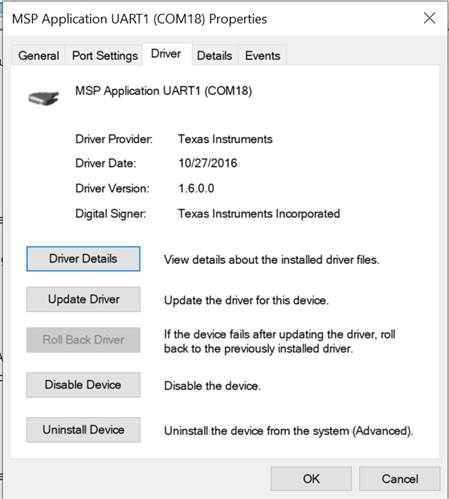SLVUC46D March 2021 – November 2023
3.1 MSP430 FET Drivers
The MSP430 FET Drivers are required for the operating system to properly enumerate the JTAG and UART ports created by the EZFET_LITE. The latest drivers can be found here: MSP430 FET Drivers
Download the driver package corresponding to your operating system, extract the archive, and run the installer.
In Windows®, two new ports must be enumerated when the EVM is connected Figure 3-1:

Figure 3-1 MSP430 EZFET_LITE Enumerated USB Ports
Successful installation also shows Texas Instruments as the driver publisher (Figure 3-2):

Figure 3-2 MSP Application UART Driver Properties